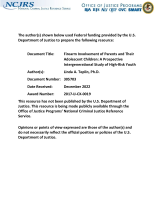The role of hopelessness and procedural justice on depressogenic outcomes in serious adolescent offenders
Journal
Law and Human Behavior
Date Published
2022
Agencies
NIJ-Sponsored
Publication Type
Research (Applied/Empirical)




